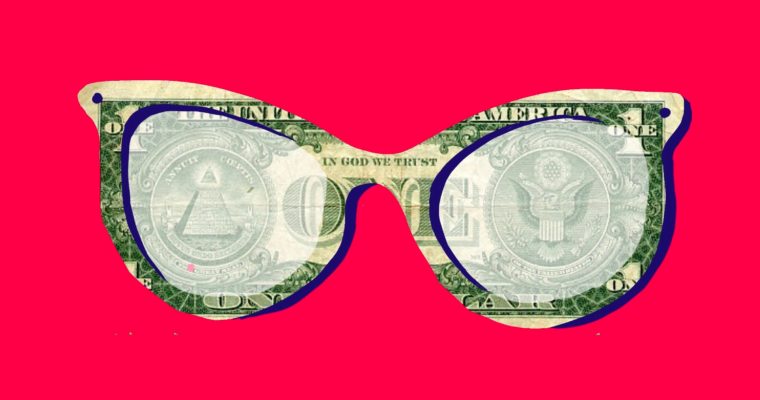Take-aways from the YSI Plenary
By Christina Mosalagae
What is your true purpose?
What keeps you going when you are sailing against the tide, when the mainstream is against you? That was the question that INET President Rob Johnson posed at the start of the YSI Plenary. Before looking out into the world, he urged us to look in.
If you know your true purpose, he explained, you will know how to respond to the needs and challenges around you. If you don’t, you are susceptible to being tossed around by the waves of popular opinion. Our purpose can anchor our hope when the journey is difficult and the wind seems to steer us off course. It is fundamental on our voyage as young scholars.
But how do we find our true purpose? There are a few things that might help. Recounting his time as a young scholar, Rob shared that Joseph Stiglitz used to teach camaraderie, curiosity, creativity, and courage. Those are values that can serve us, and bring us closer to our purpose. Let’s take a look back at the plenary with those in mind.

Curiosity: Speakers
2020 was the year of uncertainty, posing a challenge to all of us. But as Mervyn King said: uncertainty is the spice of life. The YSI Plenary was evidence of that. When uncertainty threatened the Plenary, YSI managed to respond with curiosity. We asked: what would it look like to take this online? How might we figure out what the most pertinent questions are? How could we collaborate on that virtually?
Over the course of the event, our curiosity was rewarded with a flood of interesting questions. One that still resonates with me was from none other than Pope Francis. He asked: What place does the current economic system give to uselessness, that is, to beauty? I won’t claim to have the answer to this question. It has caused me to sit in the tension of uselessness and beauty. To make room for beauty in life and to appreciate it for its own sake.
Another theme that stood out to me was the role of story-telling. Lynn Parramore shared that the best economists are storytellers, and George Akerlof asked us to think deeply about the role of economists in society. This fueled my curiosity for story-telling as a way to bridge disciplines, disseminate ideas, construct narratives, connect history, create culture, and shape our role as economists, lawyers, sociologists, and historians.

Creativity: Plenary Website
Bill Janeway stated that innovation, and creativity, stems from trial and error and error. Being afraid of failure inhibits true innovation. Creativity arose throughout the plenary, but its most vibrant display might have been the platform itself. An interactive system, dreamed up by the YSI Management Team, coded by Entropy Fox, and designed by Hackstage became a reality through relentless commitment. Their teamwork displayed how limitless the possibilities are when developers, creatives, economists, sociologists, and lawyers (to mention a few) step out of their enclaves and use their unique perspectives to come up with solutions together!

Camaraderie: Social Island
The camaraderie within the YSI community was felt throughout. Although we were not in the same physical space, there was a closeness of spirit and a shared purpose that kept us moving in the same direction. And on Social Island, it truly shined!

Young scholars bonded over all their different interests, skills and talents. From meeting each other’s pets, to talking about chess or martial arts, we got to know the dynamic lives of YSI members (and who to never challenge to a duel). It was also the birthplace of the first YSI Running Club, the location of Jay Pocklington’s birthday party, and a space for sharing meals, cultures, and stories. Stories about the importance of Kimchi to a Korean family; a mother and daughter sharing recipes as part of their family history; and the importance of making Carbonara the correct way! These stories brought strangers closer together.
On Social Wednesday, the island’s schedule was especially packed: During a YSI Trivia Gameshow, we all learned about the history of YSI. Lord Robert Skidelsky shared stories about John Maynard Keynes, and Rob Johnson held a music hour with songs that might encourage the YSI crew (playlist here!). And there was a true Poetry Slam, featuring Natasha T. Miller whose words resonated deeply. She was a reminder that stories have the power to change people.
Courage: Where to from here?
Courage was the fuel behind the plenary. It was what the Management Team relied on for their ideas, what participants needed to overcome their stage fright, and what all of us used to develop our list of pertinent research questions. And now that the plenary is over, we require courage again, to put our projects and plans into action.
Yanis Varoufakis said that challenging the mainstream ways of doing economics comes at a cost, but that it’s worth it. Maintaining intellectual integrity in the face of conformity will require sacrifice. There is a proverb that one must consider the cost before building the house. So we might ask ourselves: what will courage cost, and will it be worth it? Looking back on these 10 days we’ve had together, I think it is.
Whenever we doubt ourselves, we can look back and remember that 21 working groups came together, put on 200+ sessions, 20+ social events; engaged 100+ speakers, and brought over 10,000 young scholars together.
We won’t forget Nathan Oglesby’s raps before every Questions Fair; the spontaneity of Mariana Mazzucato attending a Jazz and Wine social; the storytelling of Robert Skidelksy; the genius of George Akerlof (as well as his singing!); the wisdom of Andrew Sheng; and getting to know the strange and wonderful personalities of the Management Team.
With the momentum of the Plenary in our sails, the voyage continues, we remain on course guided by our constellations of questions. What waves and winds may come next remains uncertain but as we face these challenges with camaraderie, curiosity, creativity and courage, we have the opportunity to develop new economic thinking that is free of intellectual barriers, resonates with reality and serves our global society.
About the Author: Christina Refhilwe Mosalagae is currently enrolled as a Ph.D. Candidate in the Law & Institutions program at the University of Turin. After completing her undergraduate studies in law and commerce at the University of Pretoria, she obtained an LL.M. from Cornell University in 2014. Thereafter, she completed a Masters in Comparative Law, Economics & Finance at the International University College of Turin (with distinction) in 2018. Christina became a member of the INET Young Scholars Initiative in 2018, and currently fulfills the role of coordinator for the Finance, Law & Economics Working Group.


